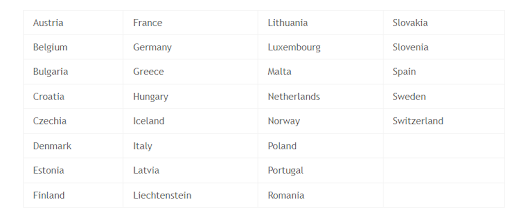European travel is getting some major upgrades — all designed to make the journey smoother, safer and more efficient. From cutting-edge border technology to paperless boarding passes, travelers can now expect advanced security and a touch of digital convenience. Here’s what you need to know about the latest updates.
Entry/Exit System (EES) Launches Across Europe
As of October 12, the EU officially launched its long-awaited Entry/Exit System (EES), a key part of the EU’s plan to modernize its border management. Over the next six months, this system will roll out gradually across 29 European countries, with full implementation expected by April 10, 2026.
The EES replaces traditional passport stamps with biometric registration, recording entries and exits for all non-EU travelers on short stays each time they cross the external borders of participating countries.
The system also collects travelers’ names, passport information and biometric data (facial recognition and fingerprints), as well as information on travelers who were refused entry. Below are the 29 participating countries:

Data collected through EES will be accessible to border officials and to law enforcement agencies for crime prevention and security purposes. Each record will be stored for three years, with the retention period renewed at every border.
For now, manual passport stamping will continue alongside EES registration to ensure a smooth transition. EU citizens, residents and long-stay visa holders are exempt from the system. To learn more, check out the EES website here.
ETIAS vs. EES: Know the Difference
While EES strengthens European border oversight and helps easily identify travelers who overstay or misuse visa-free travel, it also serves as the foundation for ETIAS, a new electronic travel authorization expected to launch in 2026.
While EES tracks entries and exits at the border, ETIAS is a pre-departure electronic travel authorization for visa-exempt travelers. Think of ETIAS as a pre-check system to confirm travel eligibility before you leave home, while EES records how long you actually remain in the participating country.
Together, these systems work hand in hand, aiming to make European travel more predictable, efficient and secure. It’s also important not to confuse ETIAS with the UK’s electronic travel authorisation (ETA), which operates separately.
Ryanair Moves to 100% Digital Boarding Passes
In another move toward digital convenience, Ryanair will go fully digital on November 12. From that date, all passengers will receive a Digital Boarding Pass (DBP) after checking in online via the Ryanair App on mobile devices. The carrier will no longer issue or accept paper boarding passes.
Why This Change Matters
- Lowers airport costs and fares for Ryanair passengers
- Provides better customer service and consolidates information in one app, including flight updates and re-booking during disruptions
- Reduces environmental impact by eliminating 300,000 kilos (roughly 661,000 lbs) of paper annually
How It Works
- Check in online via Ryanair.com or the Ryanair App before arrival
- After check-in, your DBP automatically appears in the app
- Present your DBP at airport security and the boarding gate
In cases where a passenger’s phone battery fails or a device is lost, staff will provide a free reissue — but only if check-in was completely in advance digitally. Additionally, this rule will not apply in destinations where local regulations require a physical boarding pass.
To learn more, check out Ryanair’s FAQ on its website here.

October 23, 2025 3:52 PM


